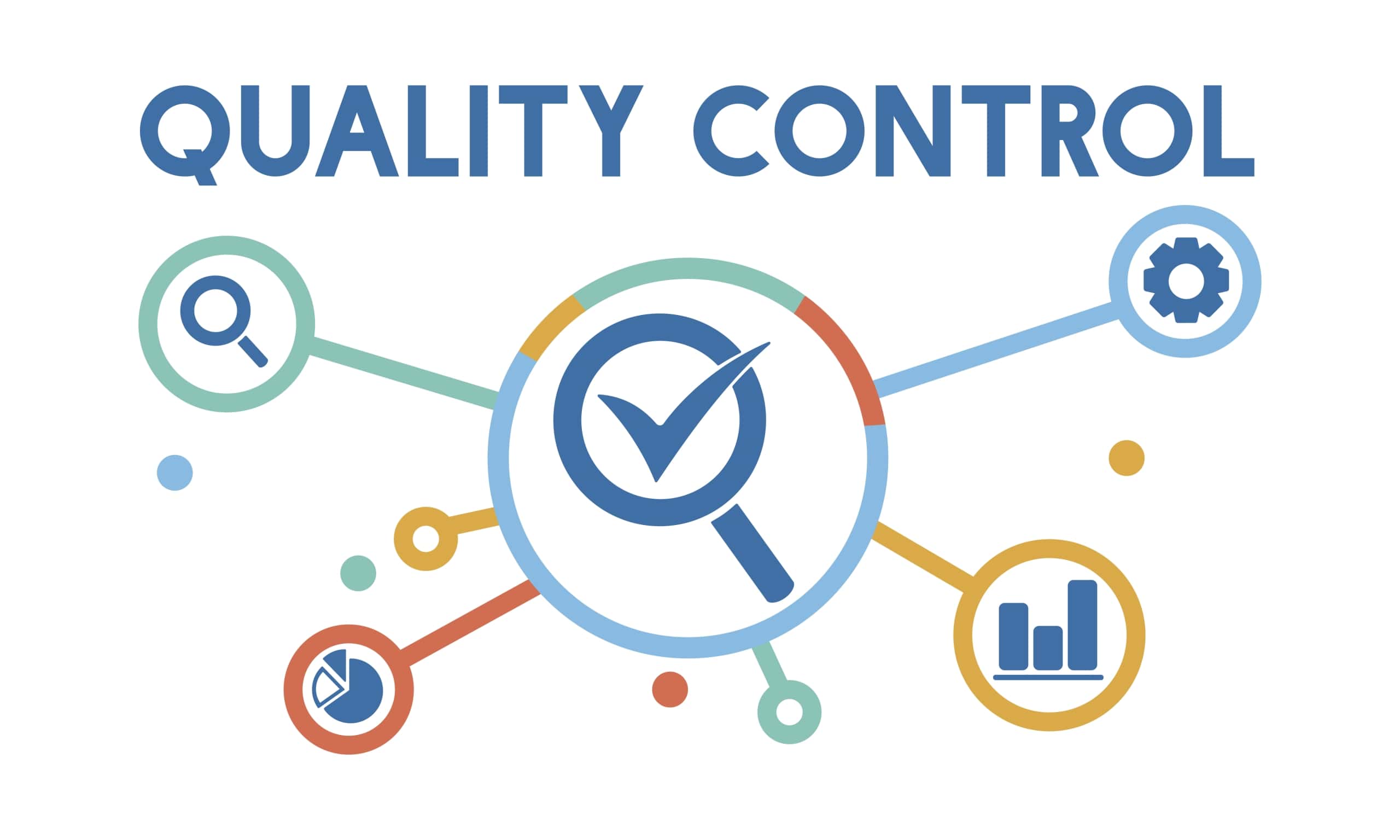1. Misaligned Folds
One of the most common problems encountered during the manufacture of wet wipes is misaligned folds. In addition to compromising the product’s usage and appearance, improper folding of wipes can cause problems for subsequent steps including cutting, stacking, and packing. This problem must be resolved right now since it may result in greater waste, production delays, and unhappy customers.
Reasons for Misaligned Folds
Misaligned folds are frequently caused by operational or mechanical issues. One frequent reason is that folding plates or guide rails, which are essential for guiding the material into the right fold configuration, are not adjusted correctly. These parts may deteriorate, misalign, or gather debris over time, resulting in uneven folds. Folding problems can also be made worse by differences in the raw materials’ tension or thickness. Uneven alignment results from materials that are too tight or too loose because they cannot pass through the folding process smoothly.
The human element is another reason that is often disregarded. When alternating between various wipe sizes or materials, operators run the risk of unintentionally changing the machine’s settings. Folding issues may also be exacerbated by irregular training and unfamiliarity with sophisticated machine capabilities.
Practical Solutions for Misaligned Folds
The first step in correcting misplaced folds is routine machine maintenance. Folding plates, guide rails, and other important parts should undergo routine inspections to detect wear and tear before it become a production problem. Smooth functioning and the avoidance of folding errors are ensured by cleaning these components to get rid of any residue or dirt.
In order to address this issue, advanced technology provides a huge benefit. Automated sensors on machines enable real-time detection of incorrect folds and immediate correction. These intelligent solutions lessen the need for manual intervention while also minimizing production interruptions.
Maintaining material uniformity is also crucial. Eliminating any folding problems may be achieved by doing pre-production inspections to confirm the thickness and quality of raw materials. Accurate folds may be achieved by integrating automated tension adjustment equipment into the production process to ensure consistent material input.
Another important factor is operator training. By offering thorough training courses and simple-to-read instructions, operators may better comprehend the wet wipes machine’s functions and settings and make fewer mistakes while making modifications. Giving operators the information they need guarantees that they can resolve little problems and continue to produce consistent results.
Wet wipes manufacturers may avoid misaligned folds, improve product quality, and maximize production efficiency by addressing the underlying issues and utilizing contemporary solutions. In the end, spending money on preventative measures and cutting-edge technology saves time, cuts waste, and increases customer happiness.
2. Material Jams
In the production of wet wipes, material jams are a frequent problem that can stop production, damage equipment, and cause a lot of downtime. In order to properly address this issue, it is necessary to have a thorough grasp of its origins and implement proactive measures to maintain smooth operations.
Reasons for Material Jams
Inconsistencies in the raw materials being fed into the machine are frequently the cause of material jams. The machinery can be quickly clogged by low-quality fabrics that are prone to ripping, bunching, or straining. For instance, while under strain during production, materials with low tensile strength may break, jamming feed rollers or folding mechanisms.
Misalignment in the feeding mechanism is another frequent reason. The material may get trapped or gather in certain places if feed rollers are not coordinated with other parts, including cutting or folding mechanisms. Wear and tear, incorrect calibration, or insufficient equipment maintenance can all lead to misalignment.
Material bottlenecks can also caused by environmental conditions. Static electricity, high humidity, or dust can all obstruct the materials’ easy passage through the machine. Static charges can cause materials to stick together, causing bottlenecks, while dust and debris can build up in feeding channels or rollers.
Practical Solutions for Material Jams
Starting with high-quality raw materials is crucial to reducing material bottlenecks. Materials that satisfy the necessary requirements for strength, flexibility, and uniformity should be sourced by wet wipes manufacturers. Small-batch testing of materials prior to large-scale production can aid in the early detection of any problems.
Another practical alternative is to upgrade equipment to incorporate intelligent feed systems. These systems identify anomalies in material flow, including tension imbalances or misfeeds, using sensors and AI-driven algorithms. After detection, the technology automatically modifies the alignment, tension, or speed to avoid jams and guarantee continuous output.
In order to avoid blockages brought on by mechanical problems, regular maintenance is essential. Debris may be removed and friction can be decreased by cleaning feed rollers, guide pathways, and other parts. While routine inspections and calibrations maintain all parts in alignment, lubricating moving parts guarantees smoother performance.
Addressing material clogs also requires environmental control. Jams are less likely to occur when a manufacturing area is kept clean with little dust or dirt. Static electricity may be lessened by installing anti-static devices, which will guarantee that materials flow smoothly along the manufacturing line.
Last but not least, operator training is essential to avoiding and fixing material blockages. By giving operators a comprehensive awareness of machine settings, maintenance needs, and troubleshooting methods, problems may be found and fixed before they become more serious.
The incidence of material jams may be considerably decreased by wet wipes manufacturers by combining premium materials, cutting-edge technology, routine maintenance, and knowledgeable operators. These initiatives assist in maintaining consistent product quality, reducing production costs, and improving operational efficiency.
3. Uneven Cutting of Wipes
In the production of wet wipes, uneven cutting is a frequent problem that can result in uneven product sizes, frayed edges, and more waste. It may have an effect on the wipes’ overall quality, usefulness, and look, which may ultimately affect how satisfied customers are. A mix of accurate machine adjustments, routine maintenance, and cutting-edge technology are needed to solve this problem.
Reasons for Uneven Cutting
Cutting blades that are dull or broken are a major contributor to uneven cutting. Repeated usage can erode the blades over time, reducing their ability to produce precise, even cuts. Rough or uneven edges can also develop from damaged blades snagging or tearing the cloth.
Misalignment between the material feed and the cutting blades is another significant issue. Cutting might become uneven if blades are not positioned appropriately or if the feed is irregular. This problem is especially prevalent when switching between different kinds of materials or thicknesses without recalibrating the apparatus.
Inconsistencies may also result from changes in material tension throughout the cutting process. The blades may not cut precisely or cleanly if the material is too tight or too loose as it moves through the cutting region. Inappropriate tension settings, old rollers, or differences in the material itself can all make this issue worse.
Practical Solutions for Uneven Cutting
Maintaining the cutting blades is the first step in addressing uneven cutting. To guarantee that the blades stay sharp and undamaged, routine examinations should be carried out. Maintaining ideal cutting performance requires putting in place a preventative maintenance program that includes blade replacement or sharpening.
Self-sharpening technology in contemporary cutting systems may guarantee steady performance over time and drastically lower the frequency of blade replacements. Without requiring human assistance, these devices maintain the blades’ efficacy by automatically sharpening them while they are in use.
Equally crucial is the cutting mechanism’s proper alignment. Manufacturers should make sure the blades are properly synced with the material feed and calibrate them on a regular basis. Accurate alignment can be facilitated by the use of sophisticated servo-controlled cutting devices. Regardless of material variances, these systems provide clean and precise cuts by dynamically adjusting blade locations in real-time.
Additionally, material stress needs to be properly managed. Consistent material flow may be ensured by automated tension control systems, which can track and modify tension levels during the production process. Wet wipes manufacturers should do pre-production testing to confirm the raw materials’ compatibility and consistency for the best outcomes.
Another crucial element in resolving uneven cutting problems is operator training. Operators should be knowledgeable about the machine’s settings and know how to modify them for various thicknesses and kinds of material. Thorough training guarantees that employees can see and fix problems fast, reducing downtime and preserving output quality.
Wet wipes manufacturers may create wet wipes with uniform diameters and smooth edges by tackling the underlying reasons for uneven cutting, which include worn blades, misalignment, and material strain. To achieve high-quality outputs and minimize production waste, it is essential to invest in cutting-edge technology, perform routine maintenance on equipment, and provide personnel with adequate training. Long-term cost reductions and increased customer satisfaction are other benefits of these efforts, which help improve the manufacturing line’s efficiency.
4. Leakage or Spillage of Liquid Solutions
When making wet wipes, it is crucial to dispense liquid solutions correctly to guarantee that each wipe is sufficiently moist and retains its quality. Leakage or spillage of liquid solutions, on the other hand, is a frequent problem that can harm machinery parts, interfere with production, and generate waste. Addressing this issue necessitates a thorough comprehension of its underlying causes as well as workable solutions.
Reasons for Spillage or Leakage
Overfilled tanks or reservoirs are one of the main causes of liquid spills or leaks. Excess fluid may leak out during movement or agitation if liquid tanks are not filled to the correct level, creating waste and possible risks.
Another factor contributing to the issue is clogged or broken dispensing nozzles. Liquid solution residue can build up in the nozzles over time, blocking the flow and resulting in uneven or excessive dispensing. Sometimes malfunctioning nozzles can cause spills by spraying liquid outside of the specified region.
Another common reason for leaks in liquid tanks and dispensing systems is old or inadequate gaskets and seals. These elements are essential for keeping the seal tight and stopping liquid leakage. Gaskets and seals may deteriorate over time as a result of wear, exposure to chemicals, or poor maintenance.
Lastly, over-dispensing may be caused by anomalies in the liquid dosing mechanism. Systems that are outdated or improperly calibrated may discharge more liquid than is necessary, which raises the possibility of spills during manufacturing.
Practical Solutions for Spillage and Leakage
Proper tank management is the first step in addressing leaks or spills. In order to prevent overfilling, operators should ensure that tanks and reservoirs are filled to the proper capacity. Accurate and reliable readings may be ensured by using automated filling systems with level sensors to monitor liquid levels and avoid overfilling.
To avoid clogs, dispensing nozzles must be cleaned and maintained. To get rid of residue and guarantee clear liquid flow, regular cleaning plans should be set up. This procedure may be made simpler by implementing automatic cleaning-in-place (CIP) systems, which guarantee that nozzles stay clean without causing production interruptions.
Another crucial measure is to regularly inspect and replace gaskets and seals. For long-term exposure to liquid solutions, high-quality seals composed of sturdy materials should be utilized. To keep a tight seal, operators should regularly inspect for wear indicators like cracks or looseness and replace parts as needed.
The danger of over-dispensing can be considerably decreased by switching to precision liquid dosing devices. By ensuring that just the necessary amount of liquid is delivered, sophisticated systems with flow meters and volumetric dosing technologies save waste and avoid spills. Additionally, these systems may be adjusted to account for varying liquid viscosities, guaranteeing reliable operation for a range of product kinds.
Wet wipes manufacturers can lessen the effect of leaks or spills by implementing environmental controls in addition to addressing the underlying causes. Safety and cleanliness may be improved by making sure the factory floor has non-slip surfaces and enough drainage. Furthermore, educating operators to spot leaks and spills early on enables them to take prompt corrective action, reducing waste and downtime.
Wet wipes manufacturers may increase production efficiency and maintain consistent product quality by addressing the root causes of leaks or spills, which include overfilled tanks, blocked nozzles, worn seals, and obsolete dosing systems. A smooth manufacturing process is ensured while cutting waste and protecting equipment by investing in cutting-edge dispensing technology, routine maintenance, and appropriate operator training. In the end, these actions result in increased profitability and a better reputation for producing high-quality goods.
5. Overheating of Machinery
In the manufacturing of wet wipes, overheating machinery can cause operational disruptions, early equipment failure, and higher maintenance expenses. Because prolonged overheating can create unscheduled downtime and worse product quality, this problem is very serious. For manufacturing processes to run smoothly, effectively, and safely, the underlying problems must be found and effective remedies must be put in place.
Reasons for Overheating
Inadequate lubrication is one of the main reasons why machinery overheats. Lubricating moving elements like gears, blades, and rollers regularly lowers friction. Inadequate or irregularly applied lubrication causes more friction between parts, which can lead to excessive heat generation and equipment damage.
Another cause of overheating is ineffective or blocked cooling systems. Over time, dust and debris can collect in machinery with cooling systems like fans, heat exchangers, or vents, impeding airflow. Components overheat when operating for extended periods due to restricted ventilation, which inhibits heat dissipation.
Another factor is worn or misaligned parts. The machine compensates for the inefficiency by producing excessive heat as a result of the increased mechanical strain caused by misalignment. In a similar vein, worn components like belts or bearings provide uneven motion that increases heat accumulation and friction.
Environmental elements that might make overheating worse include high outside temperatures and inadequate ventilation in the manufacturing area. Thermal stress is more likely to occur in machines that operate in hot, confined spaces, particularly during periods of high output.
Strategies to Avoid Overheating
Maintaining an efficient lubrication regimen is essential to avoiding overheating. By ensuring that all moving components receive the necessary quantity of lubricant at regular intervals, automated lubrication systems may lower friction and avoid heat buildup. Performance is further improved by using premium lubricants that are appropriate for the particular working conditions of the machinery.
Cleaning and maintaining cooling systems on a regular basis is also crucial. Dust and debris blockage of airflow may be avoided by cleaning fans, filters, and vents. More efficient heat dissipation can be achieved by installing sophisticated cooling systems, such as liquid cooling or thermal management units, especially for high-speed manufacturing lines.
Reducing mechanical strain can be achieved by periodically inspecting and adjusting worn or misaligned components. Early misalignment detection using vibration analysis equipment enables operators to correct components before they result in overheating. Inefficiencies that contribute to heat generation are reduced when worn parts are replaced as soon as possible.
Another crucial element is environmental management. The heat burden on machinery may be considerably decreased by keeping the surrounding temperature within advised bounds and making sure the production space is well-ventilated. Maintaining ideal operating conditions can also be achieved by installing localized cooling systems or using air conditioning in high-temperature areas.
Observation and Training of Operators
Real-time data on the operation of machinery may be obtained via sophisticated monitoring systems that are outfitted with temperature sensors and thermal imaging. Operators can take remedial action before the machinery overheats thanks to these technologies, which notify them of growing temperatures. Additionally, proactive maintenance scheduling and the identification of possible problems can be facilitated by predictive maintenance technologies that examine temperature patterns.
Preventing overheating is mostly dependent on operator training. By learning the signs and causes of overheating, operators are better able to spot issues early and take appropriate action. Guidelines for correct machine operation, such as avoiding extended usage beyond suggested cycles and making sure that equipment has enough rest times, should also be included in the training.
Proper lubrication, routine maintenance, and environmental management may all help avoid and efficiently manage machinery overheating. Wet wipes manufacturers may prevent heat stress on their equipment and ensure steady output by using sophisticated cooling and monitoring systems. In addition to increasing the lifetime and effectiveness of machinery, proactive measures also help to save maintenance costs, increase overall production, and decrease downtime.
6. Inconsistent Packaging
A major problem in the production of wet wipes is inconsistent packaging, which can have an impact on customer happiness and product appearance. In addition to detracting from the product’s visual attractiveness, improperly sealed packaging, asymmetrical dimensions, or misaligned designs may jeopardize its longevity and usefulness. To guarantee a high-quality product that satisfies market requirements, it is essential to address the underlying reasons for uneven packaging and put effective solutions in place.
Reasons for Varying Packaging
A major contributor to uneven packing is defective heat-sealing components. When it comes to keeping the packing secure and undamaged throughout storage and transit, heat sealers are essential. These parts may deteriorate or misalign with time, resulting in weak or insufficient seals that don’t adequately protect the wet wipes.
Poor coordination between the production line’s cutting, folding, and sealing stations is another contributing cause. Packaging materials may be cut unevenly or seals may be placed incorrectly as a result of improper alignment of these procedures. This problem is particularly prevalent in high-speed manufacturing lines, where little inconsistencies can swiftly escalate into more significant issues.
Inconsistencies may also result from differences in the thickness or quality of the packing materials. Overly thin materials can rip when being sealed, and materials with uneven surfaces can cause seals to adhere poorly. The issue can be made worse by environmental variables that affect the effectiveness of heat sealers and adhesives, such as humidity or temperature changes.
Practical Solutions for Inconsistent Packaging
Wet wipes manufacturers must make sure that heat-sealing components receive routine maintenance and calibration in order to solve these problems. Regular inspections enable the prompt replacement of worn-out or broken components, such as pressure plates and heating elements. More accurate sealing may be achieved using advanced heat sealing technologies, such as temperature-controlled systems, reducing the possibility of weak or insufficient seals.
Another successful tactic is to increase the synchronization between several production line stations. Purchasing automated manufacturing systems that combine the cutting, folding, and sealing procedures guarantees that every stage is completed at precisely the right moment. To ensure uniform packing, machines with real-time sensors and feedback systems can identify misalignments and make the necessary adjustments automatically.
Selecting premium packing materials is just as crucial. Materials with consistent thickness and durability that can endure the demands of the production process should be sourced by wet wipes manufacturers. Pre-production testing of novel materials can assist detect any problems and guarantee that they work with current equipment.
Maintaining package uniformity also heavily relies on environmental management. The effect of humidity and temperature variations on sealing performance is lessened when manufacturing spaces are climate-controlled. This is especially important when packing wet wipes since moisture content might impact the product and the seals’ ability to stick.
Improving the Precision of Packaging
Artificial intelligence (AI) and vision technologies are examples of contemporary advancements that can improve packing accuracy even more. Uneven cuts or misaligned designs in packaging can be detected by vision systems using cameras and sensors, which can then instantly notify operators. Even when alternating between various package designs or materials, AI-driven analytics may assist in optimizing machine settings to guarantee consistent output.
Another essential component in dealing with irregular packaging is operator training. Operators with the necessary training can detect and resolve problems like material jams or misaligned seals quickly, cutting downtime and increasing productivity. To guarantee efficient manufacturing, training should also cover procedures for material management and equipment calibration.
Product quality, customer confidence, and operational effectiveness can all be significantly impacted by inconsistent packing. Wet wipes manufacturers may guarantee a consistent and dependable packing process by addressing the underlying problems, which include defective sealing components, inadequate synchronization, and material differences. In addition to improving product appearance, combining cutting-edge technology, premium materials, and routine maintenance with knowledgeable operators will increase overall production performance and customer happiness.
7. Slow Production Speeds
Slow production rates in the wet wipes industry can result in lower competitiveness, higher operating costs, and delays in satisfying market needs. Finding and fixing the causes of slow production is crucial to increasing productivity and guaranteeing on-time product delivery.
Reasons for Low Production Rates
Outdated machinery is one of the main reasons behind sluggish production speeds. It’s possible that older machinery lacks the technical innovations required to meet the demanding requirements of contemporary production. Wet wipes take longer to fold, cut, and package since these machines frequently have limited processing power.
Another important reason is poor upkeep. Due to wear and tear on parts like rollers, motors, and gears, poorly maintained equipment may break down more frequently, operate more slowly, and have less accuracy. Delays might occasionally arise when operators address problems brought on by inadequate preventative maintenance.
Production is also slowed down by operator inefficiencies. Inadequate training or unfamiliarity with the equipment may lead to less-than-ideal machine settings, incorrect adjustments, and lengthier transition times between product kinds. This is especially troublesome in establishments that regularly swap between different wet wipe sizes or compositions.
Low-quality raw materials might also slow down manufacturing. Workflow is frequently disrupted by machines having to slow down or stop completely while handling materials that are prone to ripping, jamming, or irregular feeding. In a similar vein, processing bottlenecks may be caused by variations in material tension or thickness.
Ways to Increase Production Rates
1. Upgrade to Modern Machinery:
One of the best methods to increase production speeds is to invest in cutting-edge wet wipes equipment. High-speed processing capabilities, automated systems, and intelligent technologies enabling real-time modifications are all features of modern equipment. These characteristics save downtime and guarantee steady operation at peak speeds.
2. Put Preventive Maintenance into Practice:
Maintaining machinery in optimal condition requires a preventive maintenance program. Frequent component replacements, lubrication, and inspections may guarantee smooth functioning and drastically lower the chance of malfunctions. Wet wipes manufacturers may handle any problems before they become more serious by using predictive maintenance solutions, such as sensors that track the condition of equipment.
3. Maximize Operator Training:
Sustaining high production speeds requires well-trained personnel. The main goals of training programs should be to teach operators how to effectively set up equipment, solve common problems, and modify settings for various product requirements. Employee flexibility may be further increased and delays during personnel changes or machine downtime can be minimized by cross-training them to operate different equipment.
4. Use High-Quality Materials:
Smooth and continuous machine functioning is ensured by sourcing high-quality raw materials. Consistently strong, thick, and tensioned materials go through the production line more effectively, enabling equipment to operate at faster rates without running the danger of clogs or failures. Finding the finest solutions for attaining maximum performance might be aided by pre-production testing of materials.
5. Shorten Changeover Times:
Another strategy to increase production rates is to cut down on the amount of time needed to move between product kinds. Downtime during changeovers can be decreased by putting in place quick-change systems, including standardized components or modular tooling. Additionally, operators may rapidly and precisely alter setups thanks to advanced machinery with programmable settings.
Technology’s Function in Speed Optimization
Additional advantages may arise from incorporating state-of-the-art technologies into the production line. Consistent speed and performance are ensured by real-time monitoring and changes made possible by automation and IoT-enabled machines. Analytics powered by AI may spot manufacturing process inefficiencies and offer fixes to further optimize operations.
Production planning may also be optimized with the use of intelligent scheduling software. Wet wipes manufacturers may more efficiently deploy resources and steer clear of bottlenecks that slow down the entire process by examining demand trends and equipment capacities.
Slow production speeds can hinder a wet wipes manufacturer’s ability to meet customer expectations and stay competitive in the market. By addressing outdated machinery, maintenance issues, operator training gaps, and material quality, wet wipes manufacturers can significantly enhance their production efficiency. Investing in modern technology and adopting best practices for machine operation ensures that production lines operate at peak performance, delivering high-quality wet wipes on time and at scale. These improvements ultimately lead to cost savings, increased customer satisfaction, and a stronger market presence.








